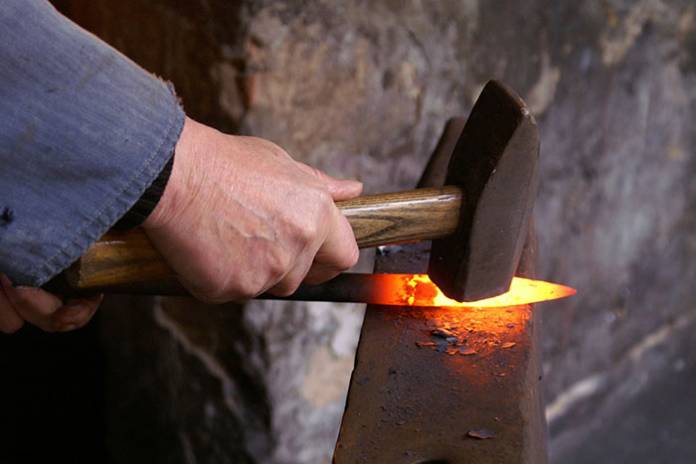
This article is crafted not only to answer what forged steel is but to provide you information on all there is to know on steel forging. Let’s get right to it.
The process of forging steel started a very long time ago to produce different kinds of end materials with various functions. But in current times, the use of machines and hydraulic hammers enabled the technique to forge steels and several other metal types.
Back in the days, the forge Smith played a leading role in manufacturing the first kinds of forged steel. He will first wet the metal and then hit the metal above an anvil with the required hammer. The first countries that were responsible for using this type of forgings were China and Persia. And later on, different techniques were developed by different countries in the world.
Forged steel is a material that comes from carbon and alloying iron under heated temperature. It has very little surface porosity, stretchable with fatigue strength, more considerable ductility, and a more refined grain structure than other steels.
The Manufacturing Processes
When it is heated to its required temperature, it becomes ductile and malleable, which allows it to be structured into the recommended shape using force and pressure. With the best method and techniques, the forging allows a billet of steel to be molded and shaped permanently without any cracks.
The process requires an induction heating system and a forge oven or furnace to heat the steel appropriately. The grain modification and metallurgical recrystallization come from the deformation process. This strengthens the outcome of the result.
The process is mainly classified into three different categories depending on the forming temperature.
-
Hot Forging
This has the highest temperature, and it is between 950 and 1250-degree Celsius, which is over the recrystallization temperature. This process doesn’t require the use of too much force and pressure to shape and structure.
-
Warm Forging
This process uses a temperature level of 750 and 950 degrees Celsius, which leads to reduced ductility. It needs more potent force and pressure than that of the hot forging. This process’s remarkable feature is that, because of its required temperature level, it allows for versatility.
-
Cold Forging
This process can be done in-room or at ambient temperature. It needs a temperature of about 150 degrees Celsius. For this process, there’s a need for special lubricants for dies and blank. It requires much larger equipment for more rigid forces and pressures. Using this process is beneficial because it allows for better conservation of materials. The link here has more https://www.engineeringenotes.com/metallurgy/metal-deformation/deformation-of-metals-and-its-types-metallurgy/41673 on the steel forging process.
The Properties of Forged Steel
It has a distinct property that differentiates itself from various treatments such as casting. Its properties are unique when you try to compare with a cast steel. Let’s discuss a few of its unique properties.
-
Solidity
Steel forgings amass to incredible strength, toughness, and high-quality durability. When they come in touch with other materials, they are much more likely to remain the same without having to break.
-
Identity
They are anisotropic, which means that the strength is not the same throughout the forging process. Instead, the consistency of the strength is maintained when the fabrication process is being conducted.
-
Uniformity
There is a maintained level of consistency in the forgings because the process is most thorough and measured. The thickness and size of the material that can be forged have its limit because it is tedious to form metals.
Advantages and Application of Steel Forgings
They are mostly used in industrial and mechanical applications because of the strength and convenience they offer. And because there is the existence of specialized alloy, they can provide significant functions for the manufacture of top-notch parts.
Below are a few advantages.
- They manufacture parts that offer durability and strength and have higher tolerance capabilities.
- They offer uniformity and maintain the same level of consistency when adding in mechanical properties.
- They are much more robust, more rigid, and reliable than most parts.
- They can create designs that accommodate high loads and stress.
- They serve as the only option for quality, which means that they are only used when there is a need for a quality result.
- Their parts do not have any cooling flaws, such as gas voids or pockets that can bring about load failure.
The ability that the forged steel possess has made it able for its usage in the industry, including agriculture, automobile, and manufacturing. They are used for pipe fitting in the oil and gas sector and used as gears and pulleys in the automobile industry. This website has more on the industrial application of steel.
Final Note
There’s always going to be a need for forged steels. And there are no signs that there will be a low demand for them in the future.











